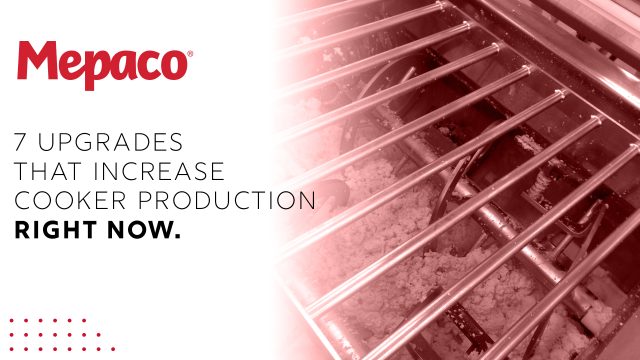
Over time, processors might see changes in product integrity and timing that does not reflect the quality and production times intended when the equipment was commissioned.
Why is this happening? When a decrease in cooker production occurs, it points to a change in the operation, process, procedure, equipment, or even operator error.
- Controls Monitoring and Verification.
If the processing scope and thermal calculations have not changed since the equipment was commissioned, check the alarm screen for faults and verify that operators have not ignored the alerts.
Check the controls setting to confirm that are the original programming. These checks include agitator speeds, pauses, direction, steam and/or cryogen performance and temperature set points. If these checks are okay, the issue may point to an operator error or mechanical problem.
In the event of a scope change which may include different product or process, the program may need to be updated to accommodate new variables.
The controls monitoring may also provide feedback on plugged injectors, steam pressure loss and lead to component updates to improve cooker performance.
Further, upstream, or downstream equipment change can affect cooker efficiencies. Consult the factory for program updates to pace the cooker with the rest of the system. Add communications and readiness relays for feedback with supporting equipment control systems to facilitate continued production.
- Agitator Control.
Changes in batch size ingredients, product temperatures or other recipe alterations can affect agitator effectiveness and efficiency. Agitator directions, speeds and pauses may not be optimized for new or changed applications.
Consult the factory for the proper batch controls settings for any changes made to product or process to maximize efficiencies.
- Scraper Maintenance.
When cooking using an indirect steam jacket, worn scrapers can cause blended food products to burn onto the tub’s edge. Burn-on will decrease heat transfer and increase cook cycle times.
Excessively worn scrapers can also break apart into the food product stream, causing critical downtime and food production waste.
Note the hours of use for your application and consider regular order intervals to ensure you have sufficient scraper assembly parts in your preventative maintenance program.
- Seal Maintenance.
Product seepage out of the seal, downstream food contamination or loss of vacuum are signs of a damaged or worn seal and will directly affect cooking and blending efficiency.
Proper installation, seal maintenance, disassembly for sanitation or using the correct seal can lead to a quick fix. Thorough seal sanitation and maintenance protocols will increase efficiencies long term.
- Vacuum Monitoring.
When vacuum is being used, it is critical the cooker be sealed and will hold vacuum. To check this, we recommend pulling vacuum to ~28 in-Hg. The unit should be able to hold that vacuum on its own without losing more than 1 in-Hg in 5-minutes.
If the equipment is not pulling the targeted vacuum, it may point to a damaged, improperly installed, or incorrect seal.
Once the correct seal and installation are verified and other components have been verified, the pump may be is ineffective and need replacement.
- Increase sanitation efficiencies.
Determine if production time can be gained by a faster sanitation and changeover process. This improvement may be a combination of automatic Clean-In-Place processes (CIP), upgrading to electropolished food contact surfaces, tool-less maintenance, and sanitation equipment access.
- Training Refresher.
In the current manufacturing labor environment, several operators may operate the equipment over the course of a few years who did not have the advantage of operator training.
To improve your cooker blender efficiencies, contact Mepaco field services for an efficiency audit, parts review, and training update on your equipment.
